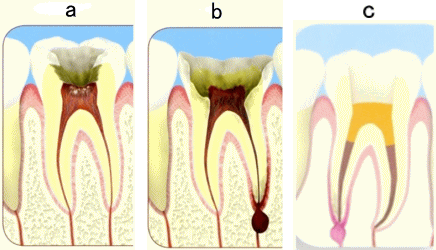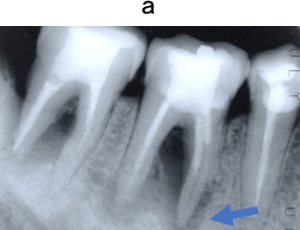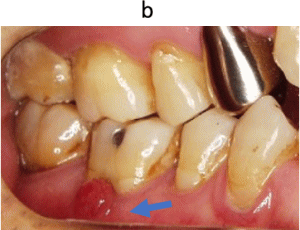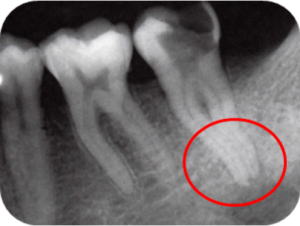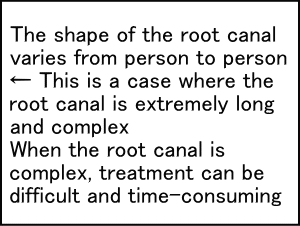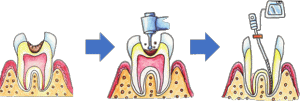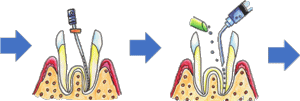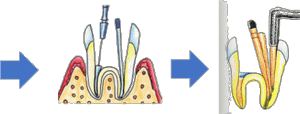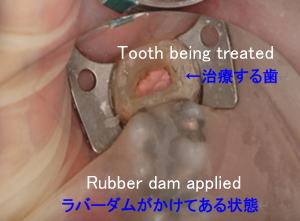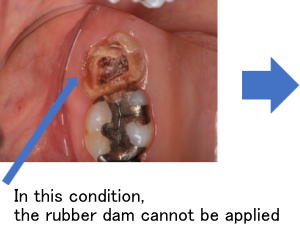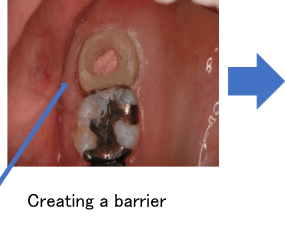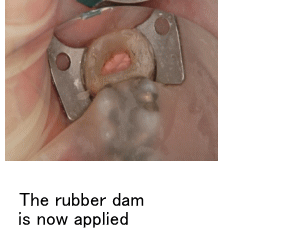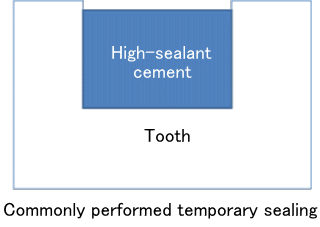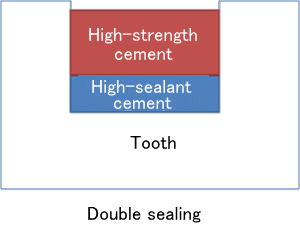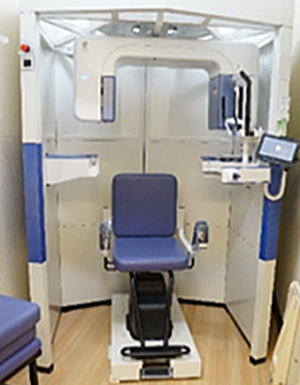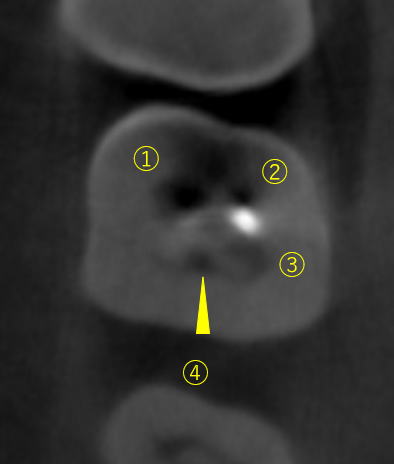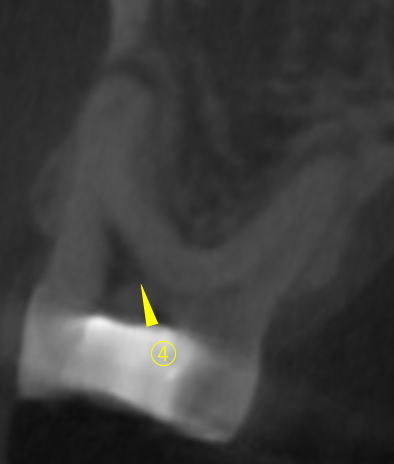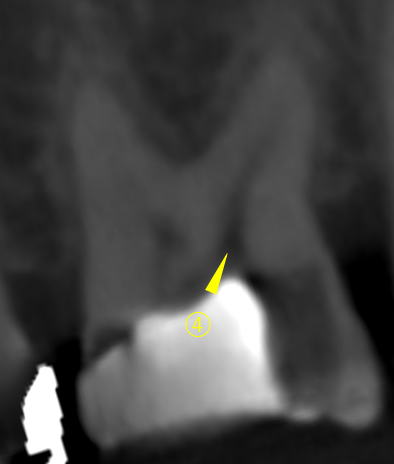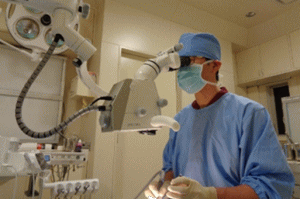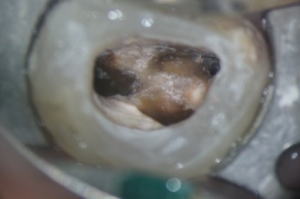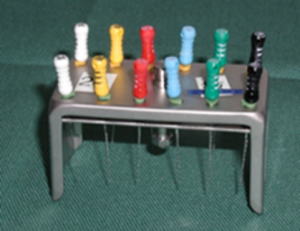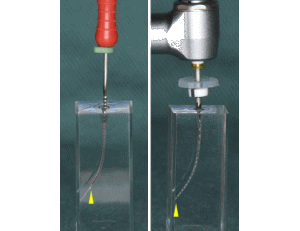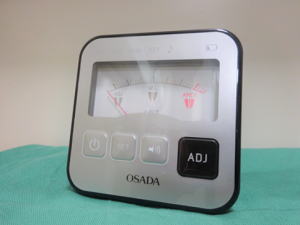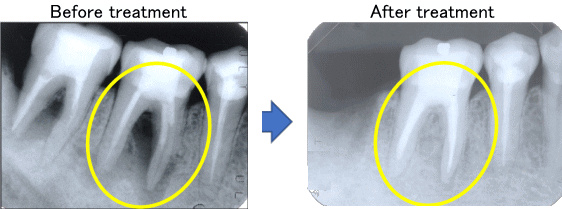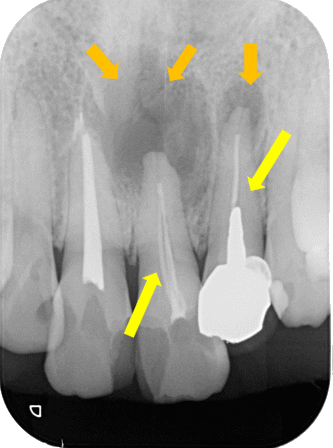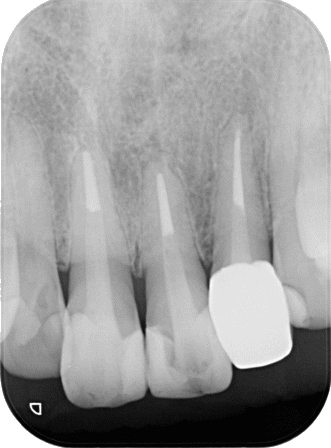What is Root Canal Treatment?
When a cavity becomes large, it spreads to the nerve of the tooth, and
the nerve must be removed.
Additionally, if there is an infection in the root of the tooth, the bacteria
must be removed.
The nerve and bacteria are removed by filing down to the tip of the root with a needle-like file, and a rubber-like medication is packed tightly to the tip of the root. This is called "root canal treatment."
Root canal treatment is a procedure to prevent the inflammation of the tooth from spreading further and to preserve your natural tooth for as long as possible. Preserving the tooth allows you to chew food properly, contributing to overall health.
1. Progression of Cavities
① Pulpitis
As cavities progress, the nerve inside the root of the tooth (root canal) becomes inflamed, causing severe pain (Figure 1a).
② Apical Periodontitis
If pulpitis is left untreated, the nerve often dies naturally and decays, allowing bacteria to proliferate within the root.
If the dead nerve is left untreated or if a previous root canal treatment was unsuccessful, bacterial growth can recur and progress within the root, spreading inflammation to the surrounding bone, causing it to dissolve (Figures 1b, 1c, 2a).
At this stage, severe pain and swelling of the gums may occur (Figure 2b).
If the condition progresses further, the inflammation can spread to the jawbone and surrounding tissues. In more severe cases, hospitalization may be required.
|
2. When Root Canal Treatment is Necessary Due to Cavity Progression
- When the nerve in the root of the tooth becomes inflamed
- When the nerve in the root of the tooth dies
- When bacteria proliferate within the root, spreading inflammation to the bone around the roo
3. The Method of Root Canal Treatment
First, the root canal area is examined using X-rays or CT scans (Figure 3).
Then, the decayed portion of the tooth is removed (Figure 4).
Next, using wire-like instruments (reamers and files) and medication, the inflamed or dead nerve and the infected dental tissue inside the root canal are removed. Once the root canal is thoroughly cleaned, it is tightly sealed with a rubber resin medication. Finally, a crown is placed.
|
4.Features of Our Clinic's Root Canal Treatment
|
①Rubber Dam Isolation
We isolate the tooth being treated with a rubber sheet (rubber dam).
This prevents bacteria from saliva or breath from entering the root canal. It also prevents medication from flowing into the throat.
|
||||
②Creating a Barrier
Even when very little of the tooth remains, it is possible to create a wall with plastic material (barrier formation) and apply the rubber dam.
|
||||||||||||||
③Double Sealing
During the treatment period, we place a temporary filling (sealing) on the treated tooth to prevent contamination from saliva and food particles.
By using two different types of cement, we reduce the risk of the filling wearing down or coming off.
It is common to use a single material for temporary sealing, but it is more prone to wear and coming off, increasing the risk of contamination from saliva and food particles.
|
||||||||||
④ Using Equipment for Accurate Treatment
1.Dental Cone Beam CT
|
||||||||||||||||||||||||
Conventional X-rays are 2D (flat images).
Since the roots of the teeth curve in various directions, 3D (three-dimensional) diagnosis is important.
Dental cone beam CT allows us to view from all directions, enabling accurate diagnosis (Figure 8).
2. Microscope
Our clinic is equipped with three microscopes (Figure 9).
They allow us to see hidden root canals and fracture lines (indicating a tooth is cracked) that are not visible to the naked eye (Figure 10).
With accurate diagnosis, we can perform ultra-precise treatments.
|
||||||||||
3. Files and Nickel-Titanium Files
Files are stainless steel cutting instruments used to remove nerve tissue, bacteria, food debris, and fillings from the root canal, as well as the infected walls of the root canal. They come in various thicknesses and lengths (Figure 11).
At our clinic, we use thoroughly sterilized instruments.
Additionally, we use nickel-titanium files, which are more flexible than traditional stainless steel files, allowing for the treatment of complex root canals (Figure 12).
|
||||||||||
4. Root Canal Length Measuring Device
It is a device used to measure the length to the tip of the tooth root.
It is used to ensure safe and accurate treatment.
(Figure 13)
|
|||||
5.Treatment Cases at Our Clinic
|
|||||||||||||||||||||||||||||
|




